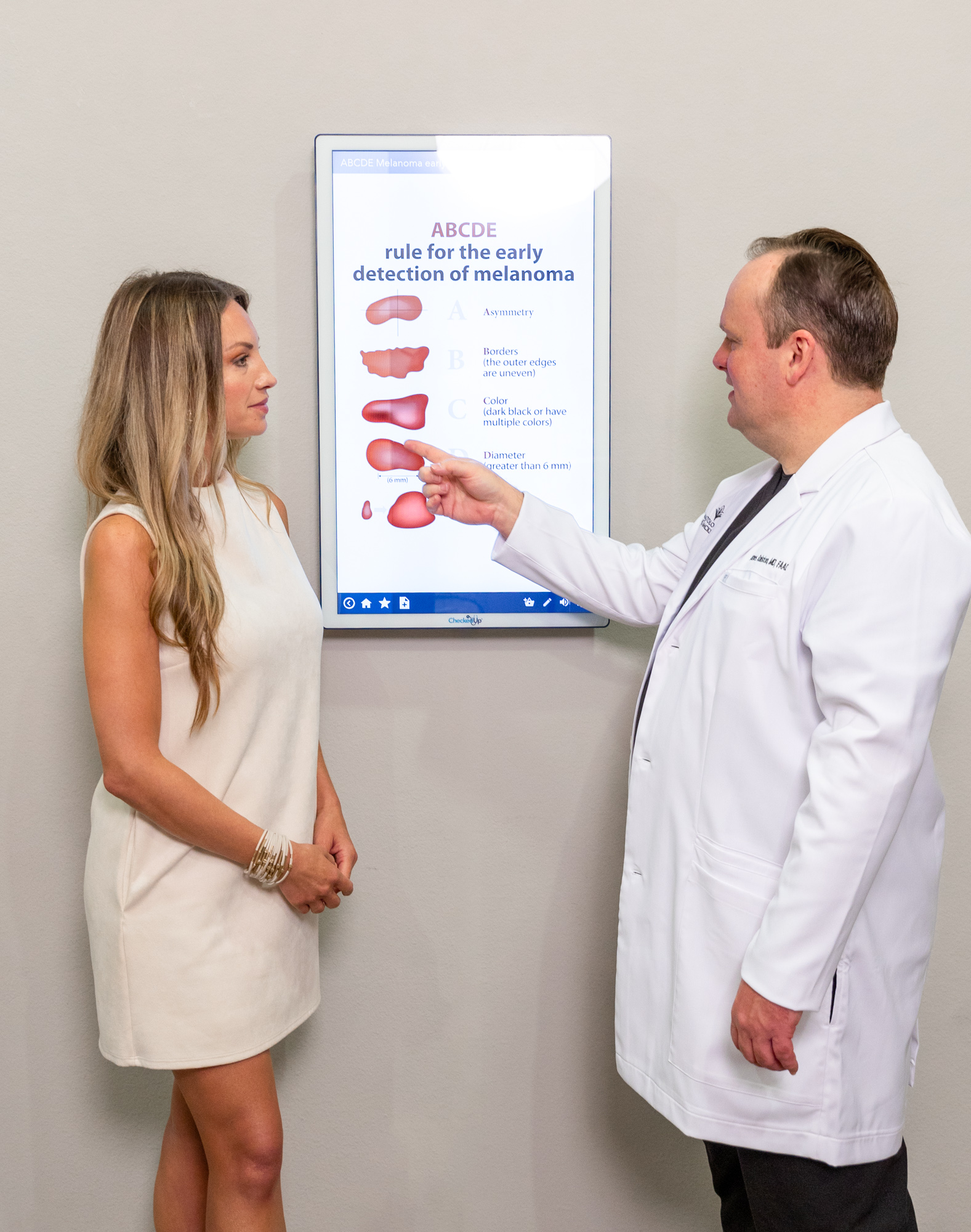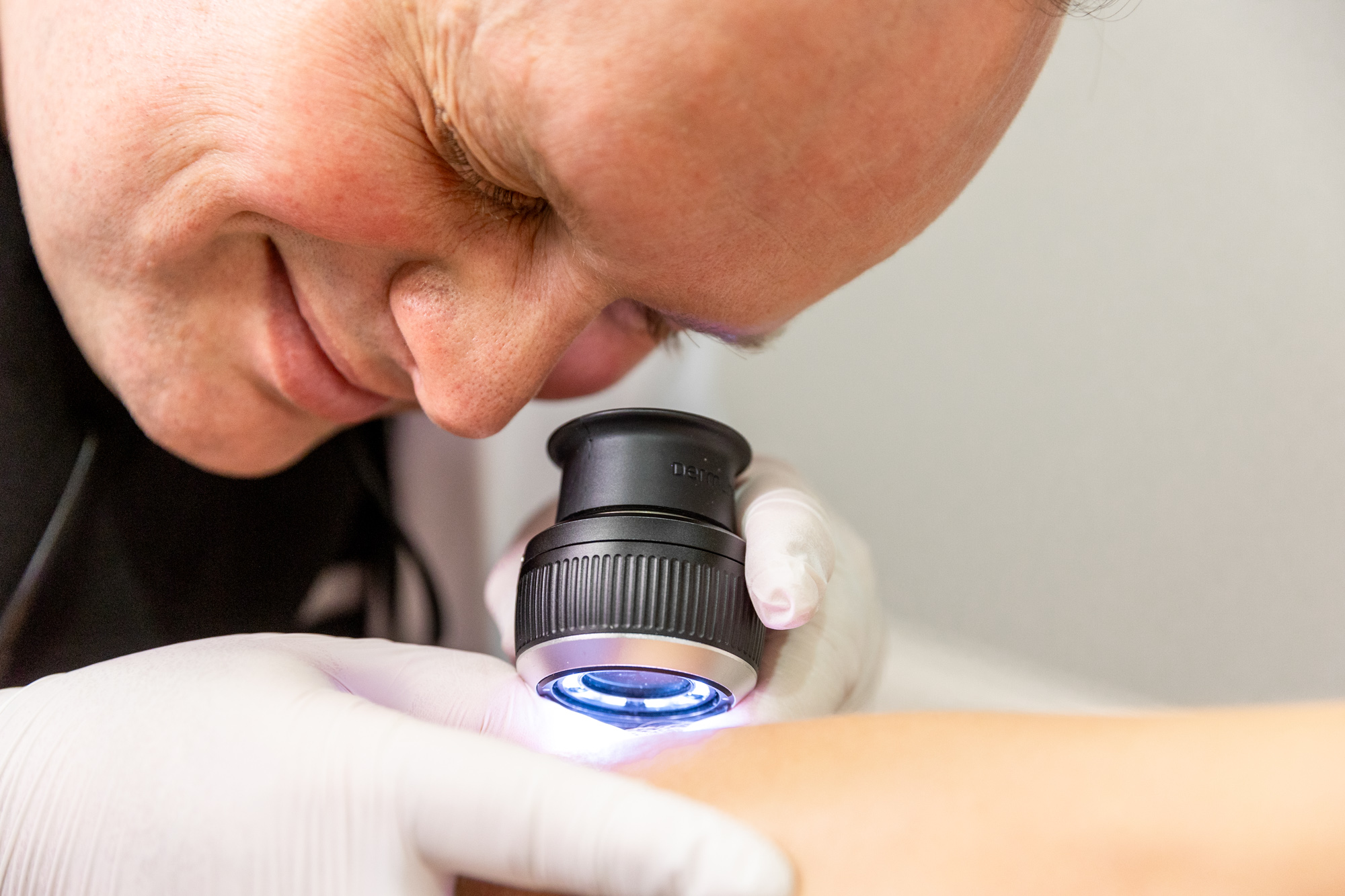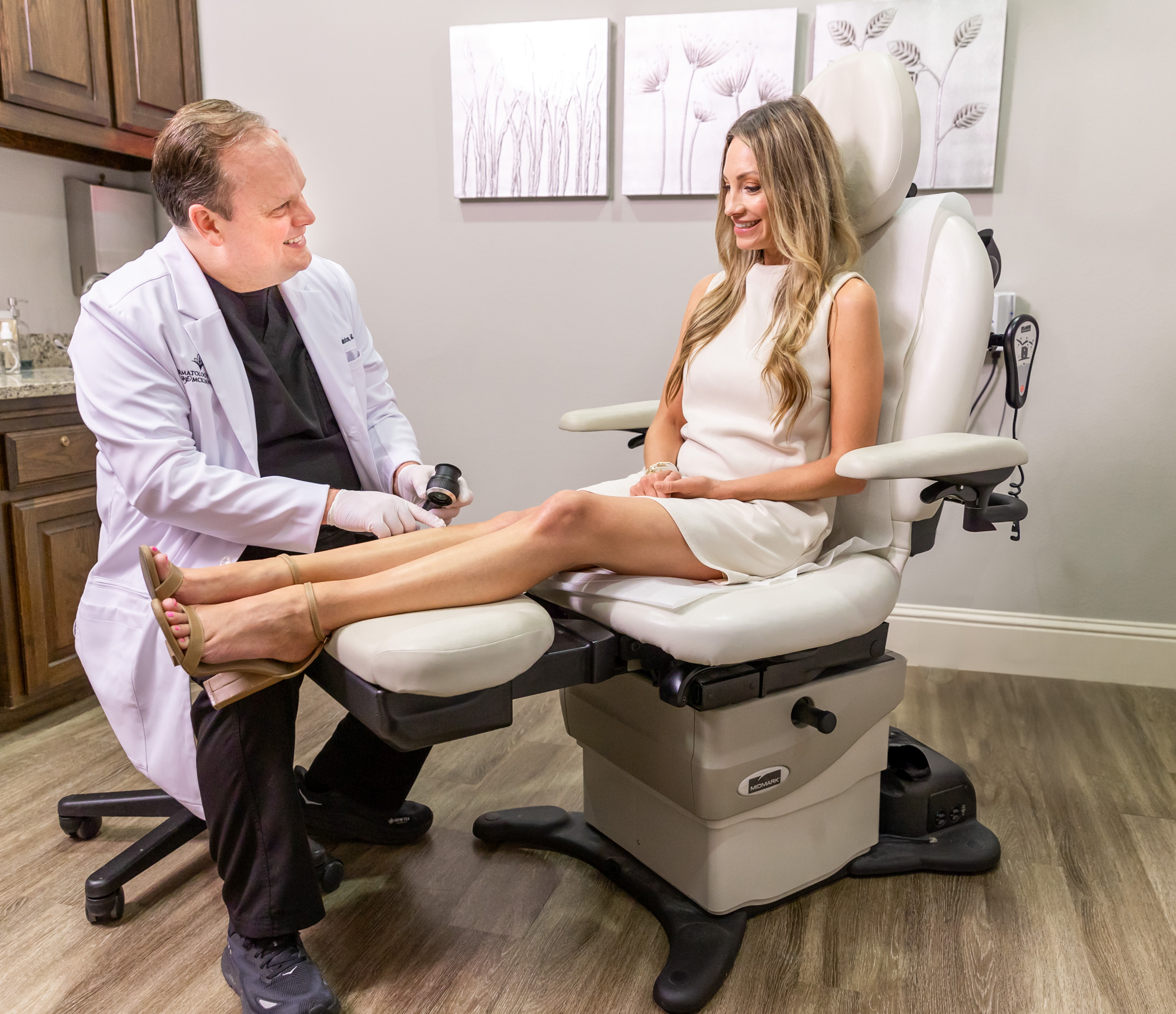Winning Awards In McKinney





Personalized Care Planner
Patients can design their personalized path to optimal health and wellness with the Dermatology Center of McKinney’s intuitive treatment planner.


Telltale Signs of Cancerous Moles
Moles are common and usually harmless, but certain changes can signal a need for professional evaluation. Early detection of abnormalities in moles significantly improves the outcomes for precancerous and cancerous conditions. Dr. Ralston is committed to providing expert assessment and care, including mole removal in McKinney, ensuring patients’ concerns are addressed promptly and effectively.
The ABCDEs of Early Detection
Patients can use the ABCDE method to help them detect the early signs of skin cancer and determine when they should seek professional help:
- Asymmetry: One half of the mole does not match the other in size, shape or color.
- Border Irregularity: The edges are ragged, notched, or blurred.
- Color Changes: The mole is more than one color, including shades of brown, black, pink, red, white, or blue.
- Diameter: The mole is larger than a pencil eraser (about 6mm).
- Evolving: The mole periodically changes in size, shape, and color.
Advanced Detection Methods
Nevisense
During treatment, patients sit comfortably while their provider glides as a small, handheld device across surface of their skin. The device uses advanced electrical impedance spectroscopy to detect early signs of skin cancer.
As the device scans a mole, it measures the flow of electrical currents, identifying irregularities beneath the skin that are invisible to the naked eye. This quick and noninvasive procedure provides critical information that helps Dr. Ralston or another member of the team to decide the best course of action for moles, potentially sparing patients from an unnecessary biopsy.
SkinIO
Using SkinIO is like taking a high-tech selfie of the skin. This tool transforms smartphones into powerful skin monitoring devices. Patients simply capture images of their skin, which are then analyzed using sophisticated algorithms. The process tracks changes in moles over time, alerting the patient and the Dermatology Center of McKinney of any subtle changes that might require a closer look.
DermTech
During treatment, Dr. Ralston applies a small, sticky patch to the mole of concern. The patch painlessly collects cells from the surface of the skin without any cutting or bleeding. This sample is sent to a lab where advanced genetic analysis is conducted to detect signs of skin cancer.







